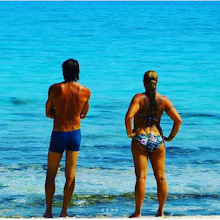Is the tan a sign of healthy skin ? Share it on Facebook

Summer plans include sea baths, visiting beautiful beaches, skin tanning, which many consider to be a reflection of the overall success of their vacation !!! But is the tan a sign of healthy skin?
Let's get things right from the beginning. Ozone is Earth's natural sunscreen, that shielding life (plants, animal and humans) from dangerous solar ultraviolet radiation. Human-produced chemicals in atmosphere - such as chlorofluorocarbons (CFCs), used for many years as refrigerants and in aerosol spray cans - have depleted the Earth's ozone layer. Scientists first recognized the potential for harmful effects of CFCs on ozone in the early 1970s. In the 1980s, governments around the world woke up to the destruction of the ozone layer and in 1987 negotiated the Montreal Protocol - an international treaty designed to protect the ozone layer by banning CFCs and similar ozone-depleting chemicals. As The Ozone hole area changes, it also changes the need of protection against solar ultraviolet radiation.

Is the ozone hole area getting bigger or smaller? Observational data on both the extent of the ozone hole and on the ozone concentration indicate that its extent is very slowly decreasing with fluctuations. For example, the ozone concentration arround the earth on July 20, and August 18, 2019 was the smallest observed ever, for those dates.
 Tanning is the body's own defense against damage caused by ultraviolet (UV) radiation, and our exposure to it during the day is cumulative. Light tan can reduce the risk of burns, but there is still the risk of skin damage. Tanning according to science is not a sign of health, but sign of damage to the skin.
Tanning is the body's own defense against damage caused by ultraviolet (UV) radiation, and our exposure to it during the day is cumulative. Light tan can reduce the risk of burns, but there is still the risk of skin damage. Tanning according to science is not a sign of health, but sign of damage to the skin.
Gradual exposure to the sun is recommended, afternoon and morning hours are best, while always using the proper sunscreen, keeping in mind your skin phototype ( as described below). Properly clothes, hat and sunglasses is also a must.
| TYPE OF SKIN | REACTION TO THE SUN |
| I pale white | Very sensitive It always burns easily, seriously and eventually tans little or nothing. SPF * 50 continuously |
| II white skin | Very sensitive It usually burns easily and tan little. SPF 50 continuously |
| III white skin | Mildly sensitive Burns, moderately tan gradually and evenly. SPF 30 |
| IV light brown skin | Moderately sensitive It burns and tans easily. SPF 30 and then SPF 20 |
| V brown skin | Slightly sensitive It easily tans, it does not burn SPF 20 and then SPF 15 |
| VI Dark skin | It burns almost never tan very and constantly SPF 15 |




